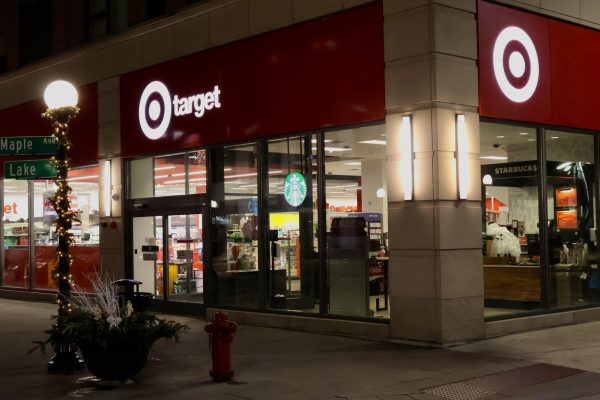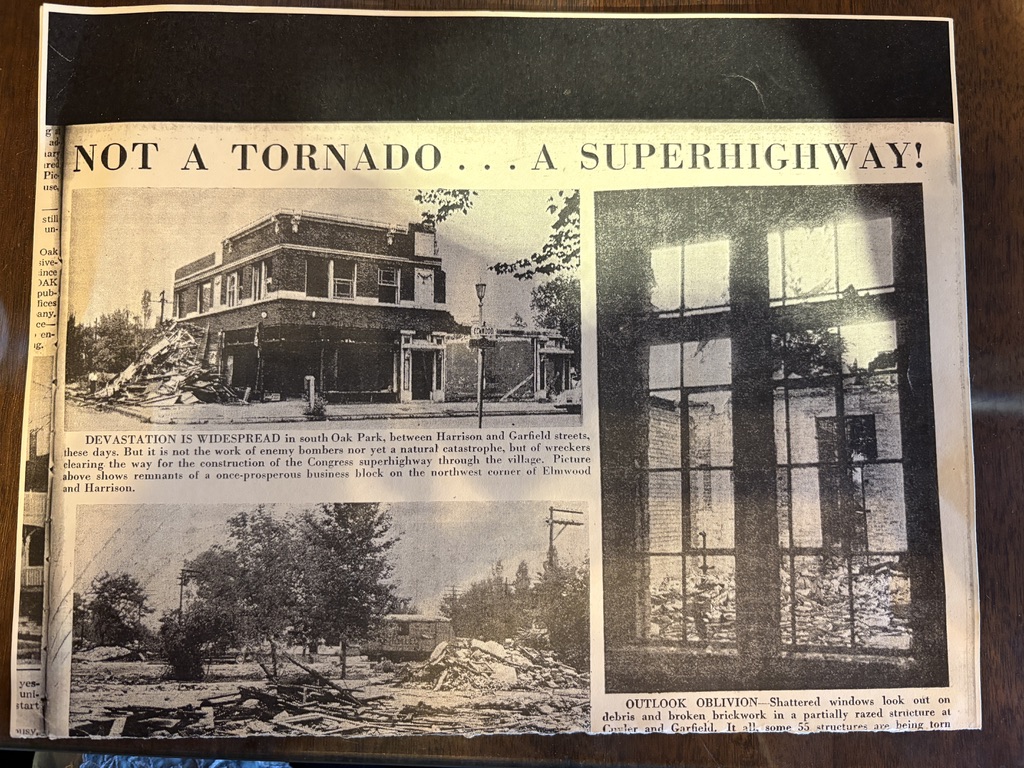
This is the final story in a three-part series exploring the history of Oak Park’s main commercial corridor, on Lake Street between Marion Street and Harlem Avenue. Part 1, published on Oct. 23, told the story of how a Black community and church grew in the area in the early 20th century. Part 2, published Nov. 20, explained how that community was displaced when the area became profitable, and outlined the economic impact of that displacement.
Walking down Lake Street between Marion Street and Harlem Avenue is to walk through an important piece of Oak Park history. In the early part of the 20th century, it was a growing black community, anchored by the Mt. Carmel Baptist Church at 1128 Westgate St. As previous installments of this story explained, that community was pushed out when the land became profitable. Today the church is long gone, and a Target store stands in its place.
Imagine how that community and church would have benefited over the years by owning such valuable property.
I filed Freedom of Information Act requests with the Village of Oak Park to see how much the land would be worth now. In the last installment of this story, I estimated the value of the land at 1138 Westgate at $393,184. The church sold its building for $12,000 in 1930.
The property at 1138 Westgate St. is not the only land that gained value after the displacement of the Black community. According to information gained through another FOIA request, the land on the adjacent block of Lake, Marion and Westgate streets increased by 79.65%, in only 20 years from 2002 to 2022, rising from $11.5 million to $20.7 million.
It wasn’t just a handful of white landlords and business owners who profited. The Oak Park village as a whole benefited in the form of decades of property and sales taxes generated by this downtown business district. Not only did the village benefit, local government agencies were complicit.
No action was taken by the police or the Village to prevent or investigate the acts of violence that caused Black residents to leave the area. No police report was filed for the firebombing on 838 Belfort Ave., for example, and the arsonists were not charged. According to the 2009 book “Suburban Promised Land,” published by the Historical Society of Oak Park and River Forest, the Jefferson family home was set ablaze a second time resulting in the porch of their house blowing up. When investigating the second bombing, police even blamed the Jefferson family for setting the fire.
When these acts are allowed to go on, when the government agencies fail to uphold the law, they are no longer isolated acts of racism, they are part of a system of oppression. This act of displacement profited Oak Parkers for decades while simultaneously hurting the Black community in the form of wealth and opportunity deprivation. Tax dollars generated by the area have been baked into our village’s schools, parks and streets for nearly a century. Without the money generated on the block of Lake Street between Harlem Avenue and Marion Street, Oak Park would not be home to so many amazing schools, parks and community programs.
The original goal for this story was to be able to estimate the amount of wealth stolen from the Black community in Oak Park in the late 1920s. When looking for evidence, I went to the Cook County assessor’s office, the Historical Society of Oak Park, the library and submitted multiple FOIA requests to the Assessor’s office of Cook County and the Village Clerk’s office of Oak Park. To the best of my knowledge, these records don’t exist. Still from what we do know, this land today is worth approximately $104 million.
Because this history has come to light through the work of Stan West, Frank Lipo and other activists, the community has begun to take steps toward healing Oak Park’s past wrongs. On Oct. 29, 2022, a plaque was dedicated to commemorating the history of Mt. Carmel Baptist Church and the adjacent Black community. The plaque sits on the 1100 block of Westgate in Oak Park. Although this plaque is a great start, it does not come close to repairing Oak Park’s history of oppression.
An Oak Park grassroots group called Walk The Walk founded by Christian Harris, Danielle Morales and Chris Thomas proposed a reparations resolution to the Oak Park Village Board in February 2021. The proposal called for the creation of a reparations fund paid for by 40% of Oak Park’s affordable housing fund and 100% of cannabis sales tax up to $10 million annually, according to a June 2022 article in the Wednesday Journal.
The Village Board has not taken action on the proposal yet. According to the article, Harris and the other activists had hoped that candidates who support reparations would be elected to the board, but their chosen candidates were defeated.
But the fight for reparations in Oak Park is still ongoing. Walk the Walk is planning on surveying Black Oak Parkers in order to get community feedback. Along with healing the Black Oak Park community, Walk the Walk hopes that reparations will help unify Oak Park as a whole.
Evanston, a town located about an hour Northeast of Oak Park, has become the first U.S. city to introduce reparations, according to a 2021 story by NBC News. The first step of Evanston’s $10 million reparation plan issued 16 Black residents $25,000 for home repairs or property costs. Evanston’s reparations effort was put in place in order to acknowledge Evanston’s history of discriminatory housing programs and policies as well as inaction by the city. Walk the Walk is using Evanston as both a “ model and an object lesson” for their Reparations program, the Wednesday Journal article noted.
Oak Park is known as one of the most progressive and liberal communities in the Chicagoland area. If the village wants to live up to its reputation, it would be wise to follow the lead of groups like Walk the Walk who are showing the village the way forward.












